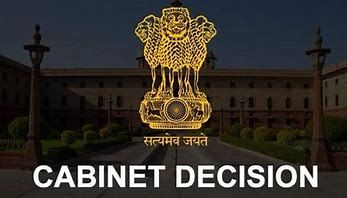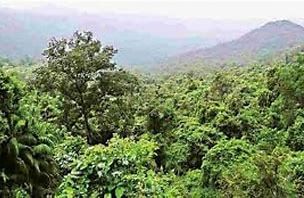UPSC Daily Current Affairs- 10th March 2024 | Current Affairs & Hindu Analysis: Daily, Weekly & Monthly PDF Download
GS-I
Why do we celebrate Women’s Day on March 8?
Subject: Indian Society
Why in News?
March 8 marks International Women’s Day (IWD), a global observance celebrating the social, economic, cultural, and political achievements of women.
- Rooted in historical movements for women’s rights, IWD serves as a reminder of the ongoing struggle for gender equality.
International Women’s Day: It’s Origin
- First National Woman’s Day: Originating from the Socialist Party of America, this day was designated to honor the 1908 garment workers’ strike in New York City, where women advocated for improved working conditions and voting rights.
- First Wave Feminism: The protests formed part of the broader First Wave Feminist movement, which campaigned for women’s suffrage, equal pay, and fundamental rights.
- Global Initiatives: The momentum for an International Women’s Day grew at the Second International Conference of Working Women in 1910, where Clara Zetkin proposed the concept of a global day of celebration to advance women’s demands.
Historical Milestones
- Russian Influence: March 8 gained global prominence due to protests by Russian women on February 23, 1917 (according to the Julian calendar), calling for an end to war and food shortages. This date coincided with March 8 on the Gregorian calendar, subsequently becoming the symbolic date for International Women's Day (IWD) celebrations.
- Role in Russian Revolution: Women's active participation in the 1917 protests played a crucial role in mobilizing public sentiment against the monarchy, ultimately contributing to the Russian Revolution and the establishment of a communist state.
- Global Recognition: Over time, International Women's Day has attained widespread international recognition, with governments and organizations worldwide commemorating the day to acknowledge women's contributions to society and advocate for gender equality.
Evolution and Contemporary Significance
- Continued Advocacy: Despite advancements, persistent challenges underscore the need for ongoing advocacy for women’s rights and gender equality.
- Global Celebration: International Women's Day (IWD) provides a platform to celebrate women’s achievements while addressing areas needing improvement, including representation in leadership roles and combating gender-based violence.
- Policy and Recognition: Governments and organizations worldwide acknowledge the significance of IWD, with initiatives such as Women’s History Month highlighting women’s historical contributions and advocating for policy changes.
- Ongoing Struggle: The fight for gender equality remains ongoing, emphasizing the continued importance of IWD as a catalyst for collective action and solidarity in advancing women's rights globally.
Conclusion
- International Women’s Day is a testament to women’s resilience and activism throughout history.
- From its grassroots origins to its global recognition today, IWD embodies the progress made and the challenges that remain in achieving gender parity.
- As the world celebrates the achievements of women past, present, and future, IWD serves as a beacon of hope and a call to action for a more inclusive and equitable world.
Source: Indian Express
GS-II
The Competition Commission of India (Settlement) Regulations 2024
Subject: Polity and Governance

Why in News?
The Competition Commission of India (CCI) has recently notified the Commitment and Settlement Regulations.
Background:
- These regulations play a crucial role in streamlining the settlement and commitment mechanisms under the competition law. commitments are proactive proposals made by accused enterprises to address competition concerns, while settlements are agreements reached during ongoing investigations to resolve cases efficiently.
About THE COMPETITION COMMISSION OF INDIA (SETTLEMENT) REGULATIONS 2024:
- Settlement Regulations, 2024: Introduced by the Competition Commission of India (CCI) to expedite market correction and minimize legal disputes.
- Purpose: These regulations offer a framework for enterprises to resolve cases during ongoing investigations.
- Legislative Amendment: The Competition Act, 2002 underwent amendment on April 11, 2023, through the Competition (Amendment) Act, 2023.
- New Provisions: Sections 48A and 48C were introduced to establish a settlement mechanism within the Act.
- Procedure: Specifies the process for submitting settlement applications and conducting related proceedings.
- Content: The regulations outline the format and details required in settlement applications, circumstances for CCI to reject applications, and methods for determining the Settlement Amount.
- Objective: Aims to simplify the process, enabling enterprises to effectively handle inquiries and alleged violations under the Act.
Competition Commission of India (CCI)
- The Competition Commission of India (CCI) is a statutory body established under the Competition Act, 2002.
- Its primary objective is to promote fair competition, prevent anticompetitive practices, and ensure a level playing field for businesses.
- The CCI investigates cases related to antitrust violations, mergers, and abuse of dominant market positions.
Source: PIB
Cabinet approves UNNATI Scheme
Subject: Polity and Governance

Why in News?
The Union Cabinet approved the proposal for Uttar Poorva Transformative Industrialization (UNNATI) Scheme, 2024.
What is the UNNATI Scheme?
- UNNATI Initiative: A significant program targeting industrial development and job creation in the North East Region of India.
- Objective: Focused on bolstering the manufacturing and services sectors to spur economic growth and enhance the socio-economic conditions in the region.
Objectives
- Employment Generation: UNNATI aims to create productive economic activities that generate gainful employment opportunities, thereby contributing to the overall socio-economic development of the North East Region.
- Industrial Development: The scheme seeks to encourage the establishment of industries and the expansion of existing ones, fostering growth and development across various sectors.
Expenditure Allocation
- Scheme Structure: UNNATI will function as a Central Sector Scheme, comprising two parts: Part A and Part B.
- Allocation of Funds:
- Part A: Rs. 9,737 crores designated for incentives provided to eligible units.
- Part B: Rs. 300 crores allocated for implementation and institutional arrangements.
Salient Features
- Scheme Duration: Effective from the date of Notification until March 31, 2034, with 8 years of committed liabilities.
- Commencement of Production: Eligible industrial units must commence production or operation within 4 years from the grant of registration.
- District Categorization: Districts are classified into Zone A (Industrially Advanced Districts) and Zone B (Industrially Backward Districts) to ensure targeted development.
- Funds Allocation:
- 60% of Part A outlay is designated for the 8 North Eastern states.
- The remaining 40% follows a First-In-First-Out (FIFO) basis.
- Eligibility: New and expanding industrial units qualify for incentives under the scheme.
Implementation and Oversight
- Implementing Authority: The Department for Promotion of Industry and Internal Trade (DPIIT), under the Ministry of Commerce and Industry, will oversee UNNATI's implementation.
- Monitoring Mechanisms:
- National Level Committee: Including the Steering Committee, will oversee implementation at the national level.
- State Level Committee: Will monitor implementation at the state level.
- Roles: These committees will ensure transparency, facilitate the registration process, and oversee the claims process for incentives under UNNATI.
Source: The Times of India
GS-III
City-specific Zero Carbon Action Plan
Subject: Environment and Ecology

Why in News?
India’s first city-specific Zero Carbon Buildings Action Plan (ZCBAP) has been launched in Nagpur.
Background:
- The plan seeks to contribute towards India’s net-zero emission goal by 2070.
About CITY-SPECIFIC ZERO CARBON ACTION PLAN (ZCBAP)
- Zero Carbon Buildings Action Plan (ZCBAP) by Nagpur: Initiative aimed at achieving net-zero carbon emissions from buildings by 2050.
- Collaboration: Joint effort between Nagpur Municipal Corporation (NMC) and Nagpur Smart and Sustainable City Development Corporation Limited (NSSCDCL).
- Alignment: Aligned with India’s climate goals and global commitments.
- Focus: Transforming buildings within Nagpur to meet net-zero emission goals.
- Contribution: Contributes to India’s broader net-zero emission target by 2070.
- Inclusion: Encompasses various building types such as public buildings, affordable housing, commercial buildings, and homes.
- Emphasis: Strong focus on decarbonization and sustainable development.
- Approach: Addresses greenhouse gas emissions reduction through considerations related to building materials, design, construction, management, and deconstruction.
- Impact: Targets a significant portion of Nagpur’s energy consumption and emissions.
Source: Times of India
Gold Nanoparticles
Subject: Science and Technology

Why in News?
Experts recently said that Gold nanoparticles used in medicines and beauty products may not only protect the skin from external infestations but can also help arrest the effects of ageing.
About Gold Nanoparticles:
- Gold nanoparticles (AuNPs) are small gold particles with a diameter of 1 to 100 nm.
- Once dispersed in water, AuNPs are also known as colloidal gold.
- These are also called as 'gold bhasma,'
- Properties
- Spherical AuNPs (Gold Nanoparticles): Possess advantageous characteristics such as size- and shape-dependent optoelectronic properties, a high surface-to-volume ratio, excellent biocompatibility, and minimal toxicity.
- Key Physical Properties: Notable features include surface plasmon resonance (SPR) and the capability to quench fluorescence.
- Color Variation: Spherical AuNPs exhibit a spectrum of colors (e.g., brown, orange, red, and purple) in aqueous solutions as the core size ranges from 1 to 100 nm.
- Safety Profile: These nanoparticles are non-toxic, non-phototoxic, non-genotoxic, non-irritating, and non-sensitizing.
- Applications
- Electronics: Gold nanoparticles are utilized as conductors in printable inks and electronic chips, facilitating connections between resistors, conductors, and other chip elements.
- Photodynamic Therapy: Near-infrared (IR) absorbing gold nanoparticles generate heat when exposed to light within the 700 to 800 nm wavelength range. This property enables targeted tumor eradication.
- Therapeutic Agent Delivery: Gold nanoparticles can serve as carriers for therapeutic agents, with their large surface area-to-volume ratio allowing for the coating of numerous molecules on their surface.
- Sensors: Gold nanoparticles are integral to various sensors, including colorimetric sensors capable of determining the suitability of foods for consumption.
- Diagnostics: These nanoparticles are employed in detecting biomarkers for the diagnosis of heart diseases, cancers, and infectious agents.
Source: Economic Times
Golden Langurs
Subject: Environment and Ecology

Why in News?
According to the estimation by the Primate Research Centre NE India (PRCNE) and Assam Forest Department, there are an estimated 7,396 golden langurs in India.
About Golden Langurs:
- Distinctive Fur Coloration: This species is primarily identified by the color of its fur, which corresponds to its name. Notably, their fur undergoes seasonal color changes.
- Variation in Fur Color: Young individuals exhibit nearly pure white fur, differing from the adults.
- Geographic Range: Confined to Assam, India, and neighboring Bhutan throughout the year.
- Specific Habitat: Inhabits moist evergreen and tropical deciduous forests, along with some riverine areas and savannas in Assam and Bhutan.
- Dependence on Trees: Highly reliant on trees, they reside primarily in the upper canopy of sub-tropical forests in the south and more temperate forests in the north.
- Geographical Landmarks: Their habitat is delineated by four geographical features: the foothills of Bhutan to the north, the Manas river to the east, the Sankosh river to the west, and the Brahmaputra river to the south.
- Conservation status
- IUCN: Endangered
- CITES: Appendix I
- Wildlife Protection Act, 1972 : Schedule I
Source: The Hindu
Inflection 2.5
Subject: Science and Technology

Why in News?
Recently, Inflection AI company launched its latest LLM, Inflection 2.5, an upgrade to its model that powers its friendly chatbot Pi personal assistant.
About Inflection 2.5:
- Upgraded In-House Model: Represents an enhanced version of the in-house model, now competing effectively with all leading Large Language Models (LLMs) worldwide.
- Distinct Personality: The newly upgraded model retains its signature personality while incorporating uniquely empathetic fine-tuning.
- Real-Time Web Search: Equipped with world-class real-time web search capabilities, ensuring users have access to high-quality and up-to-date information instantly.
- Expanded Topic Range: Users engage with the Pi chatbot on a broader spectrum of topics, including current events, local restaurant recommendations, biology exam preparation, business plan drafting, coding, and leisure discussions on hobbies.
What is PI chatbot?
- AI Chatbot Pi: Facilitates deep and meaningful conversations, promoted as having a personality and a more humane approach.
- Accessing Pi: Users can log on to Inflection.AI, click on "Meet Pi," and immediately engage in conversation with the chatbot.
- Companion-Like: Positioned as a companion to humans, offering free usage.
- Voice Options: Pi is equipped with six distinct voices, enhancing conversational experiences.
- Vast Text Data: The chatbot has been exposed to billions of lines of text from the open web, enabling it to engage in diverse conversations and answer a wide array of questions.
Source: Indian Express
Rajasthan’s Proposal to Classify Orans as Deemed Forests
Subject: Environment and Ecology

Why in News?
A recent state government notification has struck fear in Rajasthan community dwellers about losing access to forest produce and livelihoods.
- Communities, particularly those in western Rajasthan, are concerned about the state’s proposal to classify Oran, Dev-vans and Rundhs (sacred groves) as deemed forests.
What are Sacred Groves?
- Definition and Characteristics: Sacred groves in India are forest fragments of varying sizes, protected communally by local communities, often holding significant religious significance. They typically comprise dense vegetation, including climbers, herbs, shrubs, and trees, and are often located near perennial water sources with a presence of village deities.
- Cultural and Religious Significance: Sacred groves symbolize primitive practices of nature worship and are integral to the cultural and religious beliefs of the protecting communities.
- Nature Conservation: These groves play a vital role in nature conservation efforts, preserving biodiversity and ecosystem balance.
- Legal Protection: The introduction of community reserves under the Wild Life (Protection) Amendment Act, 2002, has provided legislative support for protecting community-held lands, including sacred groves, thereby ensuring government protection for these ecologically and culturally significant areas.
Historical references
- Association with Religious Sites: Indian sacred groves are often linked with temples, monasteries, shrines, pilgrimage sites, or burial grounds, adding to their religious and cultural significance.
- Historical References: These groves have historical mentions in Hindu, Jain, and Buddhist texts, ranging from sacred tree groves in Hinduism to sacred deer parks in Buddhism. For instance, Vrukshayurveda, an ancient treatise, and classical works like Kalidasa’s Vikramuurvashiiya provide insights into sacred groves.
- Protection on Religious Grounds: The term "sacred groves" may be broadly used to denote natural habitats protected based on religious beliefs.
- Modern Initiatives: There is an increasing interest in establishing green spaces like Nakshatravana, reflecting contemporary efforts to preserve and promote biodiversity while honoring traditional practices.
Regulation of activities in Sacred Grooves
- Hunting and logging are usually strictly prohibited within these patches.
- Other forms of forest usage like honey collection and deadwood collection are sometimes allowed on a sustainable basis.
- NGOs work with local villagers to protect such groves.
- Traditionally, and in some cases even today, members of the community take turns to protect the grove.
Threats to such grooves
- Threats to the groves include urbanization and over-exploitation of resources.
- While many of the groves are looked upon as abode of Hindu deities, in the recent past a number of them have been partially cleared for construction of shrines and temples.
Total grooves in India
- Number and Importance: Approximately 14,000 sacred groves have been documented across India, serving as vital reserves for rare fauna and flora, even within both rural and urban landscapes. Experts suggest that the actual number of sacred groves could exceed 100,000.
- Variety of Names: These sacred groves are referred to by different names in various states:
- Sarna in Bihar
- Dev Van in Himachal Pradesh
- Devarakadu in Karnataka
- Kavu in Kerala
- Dev in Madhya Pradesh
- Devarahati or Devarai in Maharashtra
- Lai Umang in Maharashtra
- Law Kyntang or Asong Khosi in Meghalaya
- Kovil Kadu or Sarpa Kavu in Tamil Nadu
Source: Money Control
|
38 videos|5293 docs|1118 tests
|
















